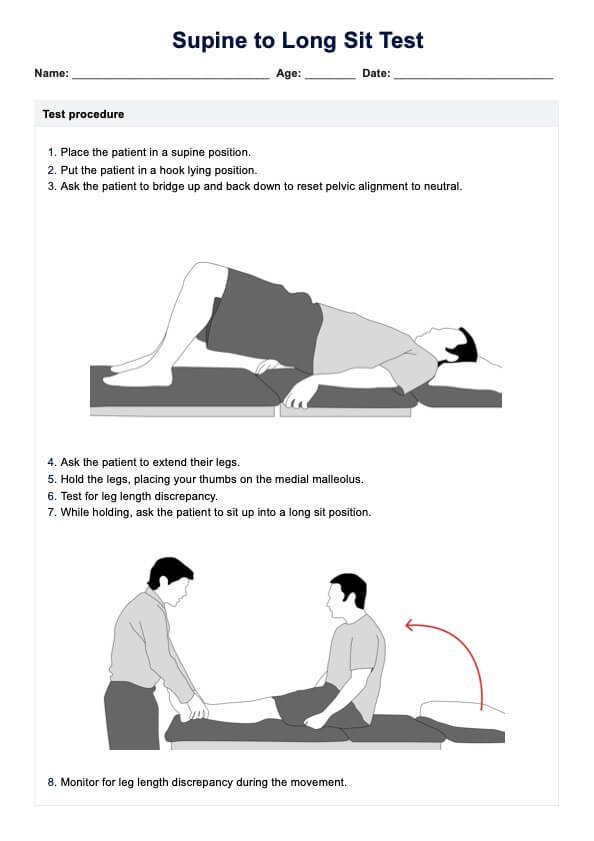The supine to sit test evaluates leg length discrepancy and identifying possible sacroiliac dysfunction by comparing leg lengths when a patient moves from lying down to sitting up.

Supine to Long Sit Test
Understand the Supine to Long Sit Test to screen for leg length discrepancy. Use our printable template for easy administration.
Use Template
Supine to Long Sit Test Template
Commonly asked questions
Innominate rotation can be caused by muscle imbalances, trauma, poor posture, or repetitive stress on the pelvis.
Innominate posterior rotation is diagnosed through physical examination, assessing pelvic alignment, leg length discrepancies, and patient history.
EHR and practice management software
Get started for free
*No credit card required
Free
$0/usd
Unlimited clients
Telehealth
1GB of storage
Client portal text
Automated billing and online payments











